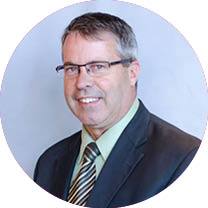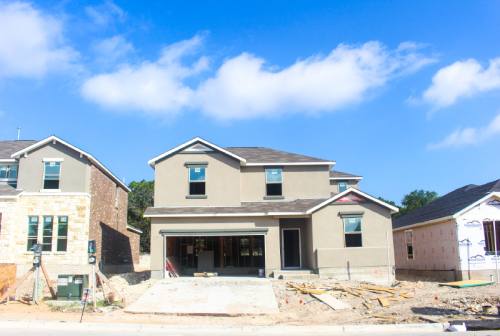1. Prices continue to Steadily climb for houses sold in San Marcos, Kyle and Buda
The median closing price of houses has averaged about an $82,000 jump in all three cities since 2011, going from a range near $125,0000 to $250,000.
In San Marcos the median sale for new and existing homes was $146,533 in 2011. In 2017, the median price was $224,033. The same trend came in Kyle, where the median has gone from $128,944 to $207,449. The greatest hike, along with the highest start and finish in that timeframe came in Buda, where the median price in 2011 was $163,773 and finished at $253,977.
Affordability and diversity are two areas the cities and the Realtors who sell in them said are an issue.
“We need more single-family houses that [are] affordable for working families,” San Marcos City Manager Bert Lumbreras said. “This is not subsidized housing, but options that would be affordable and available for a family of four with an income of $120,000 or less.”
Lumbreras said the city can help encourage that growth in the college town of 59,060.
“We also plan to encourage more low-income tax credit projects that will look at non-student housing rentals for families, seniors or other specific needs,” Lumbreras said.
Buda Assistant City Manager/Planning Director Chance Sparks said developers are changing to the needs of the economy and growing population.
“It seems like builders are beginning to rediscover housing types that were forgotten for the last 70 years, he said. “There is need for well-placed multifamily projects.
“In all instances, there is particular need for walkable design in and near mixed use settings that can help provide economic strength and access, improve quality of life and reduce transportation costs.”
Realtors have seen demand increase through all three cities as prices climb in Austin and San Antonio.
“They are still affordable communities,” said Broker/Realtor Stacy Bass, a board member of the Austin Board of Realtors. “It’s a challenge to find houses at $275,000 or less. It’s a great seller’s market right now and I don’t see that changing anytime soon.”
Sparks said inventory is the issue at this point.
“A current lack of inventory has generated a spike in home prices, and, as a result, declining affordability for many homebuyers. This trend carries into the rental market as well, as people find increasing percentages of their income dedicated to housing and transportation.”
2. Apartment prices continue to rise while occupancy rates fall slightly to 87 percent
There are 76 apartment communities in operation in the cities of San Marcos, Kyle and Buda with 14,247 units. The majority have between 100 and 250 units.
According to data from Bruce McClenny of Apartment Data Services, current occupancy is at 87 percent for the three cities.
The occupancy rate is the lowest in three years, with it being at or above 95 percent from September 2016 to May 2017. It has dropped every month since November. The Austin trend has showed a drop overall in occupancy rates the last six months.
For the three cities, the average price for a one-bedroom apartment has gone from $845 in August 2015 to $919 in July 2018, a 3 percent annual growth trend. Two-bedroom units have gone from $1,011 in August 2015 to $1,145 in July 2018, and annual growth rate of 4 percent. Three-bedroom apartments have an annual growth rate at 4.7 percent and the numbers start at $1,295 per month in August 2015 and go to $1,465 in July 2018. There are 224 efficiency apartments in the market, along with 5,195 one-bedroom, 5,823 two-bedroom and1,622 three-bedroom apartments. The rest are 4- and 5-bedroom apartments.
3. Houses are selling faster in the three markets
Days houses are on the market have decreased significantly over the last few years, according to statics provided by the Austin Board of Realtors for the region.
“The real number that stands out is months of inventory,” said Kevin Scanlan, broker/owner of All City Real Estate and Secretary/Treasurer of ABoR. “Six months of inventory is considered a balanced market, which means if no new listings were to go on the market, there would be six months’ worth of homes for sale. We are seeing three months of inventory for several years now, and at times, two months.
“I have 400 agents in my company and every day I get a call from an agent who says, ‘We have 20 offers on the table.’”
The quickest to sell, new construction and existing homes in all price ranges, are in Kyle, where a house listed for sale spent an average of 83 days on the market in 2011. In 2017, houses in Kyle spent an average of 48 days before being sold, a drop of 42 percent. Lowest averages came in May and July 2017, when houses averaged 29 days on the market.
Buda’s new and existing homes were on the market for an average of 62 days in 2017, down from 80 in 2011. The numbers represent a drop of 23 percent during those years.
In San Marcos, houses on the market sell 21 percent faster now than they did in 2011. The average numbers started and ended higher than in Buda and Kyle. The average house was on the market for 98 days in 2011 and only 77 days in 2017. In 2018, the average is trending lower than 2017 for January through May.
4. Home sales on the way up in San Marcos, Kyle and Buda
The number of new and existing homes sold in San Marcos, Kyle and Buda has climbed at a steady pace since 2011.
According to statistics from the Austin Board of Realtors, the number of closed listings in Buda saw the highest growth, going from 378 in 2011 to 821 in 2017.
Kyle was the only city of the three to have one year when the number of new and existing homes was less than the previous year. In 2016, Kyle had 1,052 homes that sold, while in 2017 it was 1,000. In 2011, 517 houses sold in Kyle.
In San Marcos, there were 343 houses sold in 2011. Slow, steady growth over the next few years has the number at 700 in 2017.
The trends for all three cities are on pace for similar growth in 2018, according to numbers in the first five months.
“These cities are attractive because you are still in Austin and the commutes aren’t horrible,” Scanlan said. “This is great for the growth in these cities, and people in Williamson and Travis counties are attracted to what they can get for the same money here.”









